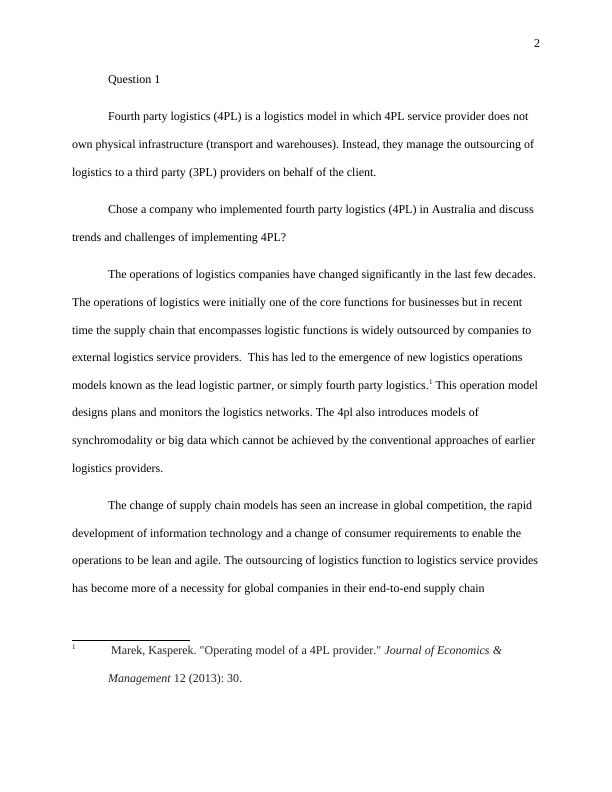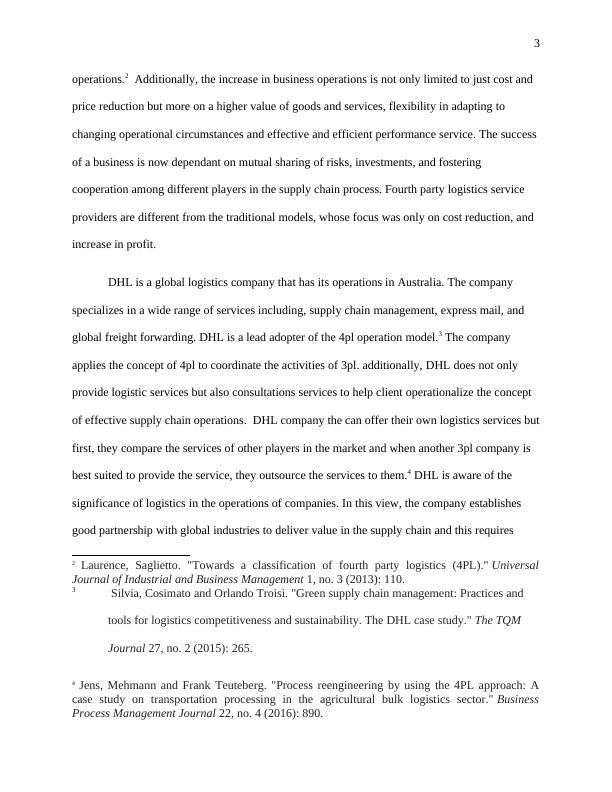Trends and Challenges of Implementing 4PL in Australia
Discuss the trends and challenges of implementing Fourth Party Logistics (4PL) in Australia, using a specific company as an example.
7 Pages1754 Words90 Views
Added on 2023-01-19
About This Document
This article discusses the trends and challenges of implementing fourth party logistics (4PL) in Australia. It explores the benefits and complexities of this logistics model, including the shift towards synchromodal logistics and the use of big data. The case study of DHL, a global logistics company, is also examined.
Trends and Challenges of Implementing 4PL in Australia
Discuss the trends and challenges of implementing Fourth Party Logistics (4PL) in Australia, using a specific company as an example.
Added on 2023-01-19
ShareRelated Documents
End of preview
Want to access all the pages? Upload your documents or become a member.
The Future Bases for Competitive Advantage in the Telecommunications Industry
|28
|5548
|458
Global Logistics Management
|14
|2789
|300
Conceptual Analytic Network Model
|12
|3378
|14
Transport and logistics management
|16
|5439
|114
Supply Chain Management and Evaluating Suppliers’ Sustainability Performance
|34
|5803
|152
Contemporary Logistics 3PL Companies Assignment
|6
|1929
|354



